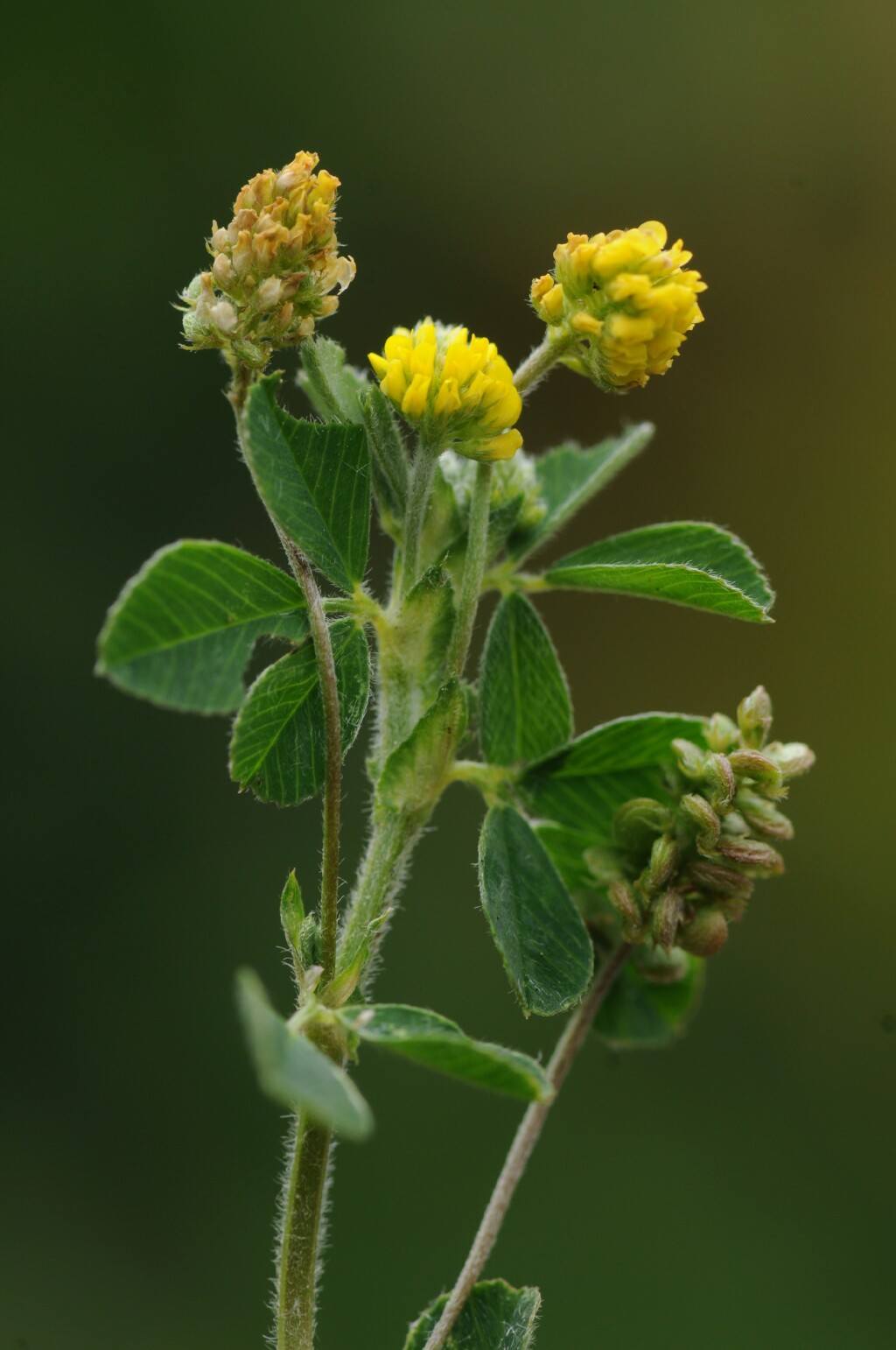Medicago lupulina
L. Black MedicProstrate or ascending annual or short-lived perennial herb; stems to c. 100 cm long, sparsely or densely hairy; hairs glandular and simple. Leaflets obovate or orbicular, 4–25 mm long, 4–20 mm wide, serrulate especially towards apex, upper surface sparsely to densely hairy when young, lower surface appressed-hairy, apex rounded or retuse with a terminal tooth; stipules to c. 15 mm long, entire or dentate, lower surface hairy. Inflorescence 10–50-fiowered; peduncle 1.5–5 cm long, much longer than subtending petiole. Pedicels to c. 1 mm long; calyx 1–2 mm long, teeth unequal, upper ones longer than tube, lower ones shorter than tube; corolla yellow; standard 2–2.5 mm long; wings slightly longer than keel. Pod reniform, 2–3 mm long, 1–2 mm wide, distal end slightly coiled, sparsely hairy, spineless, black, veins prominent, reticulate; seed single, 1.5–2 mm long, brown. Flowers mainly Oct.–Apr.
MuM, Wim, GleP, Brid, VVP, VRiv, MuF, GipP, OtP, WaP, Gold, DunT, EGL, EGU, WPro, HSF, HNF, OtR, Strz, MonT, VAlp. Also naturalised WA, SA, Qld, NSW (including Lord Howe Is.), Tas., New Zealand and many other temperate parts of the world. Native to Europe, north Africa, Asia. Scattered widely across southern Victoria where found in moist situations in pastures, disturbed ground and along road verges.
Jeanes, J.A. (1996). Fabaceae. In: Walsh, N.G.; Entwisle, T.J., Flora of Victoria Vol. 3, Dicotyledons Winteraceae to Myrtaceae, pp. 663–829. Inkata Press, Melbourne.
 Spinning
Spinning



